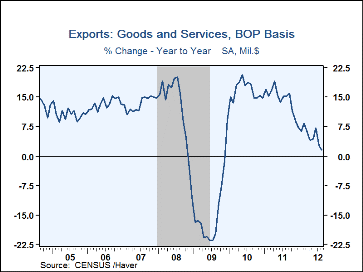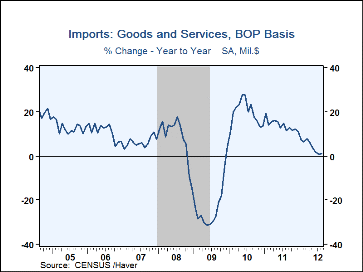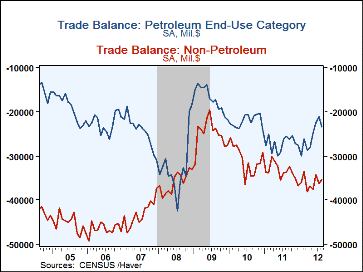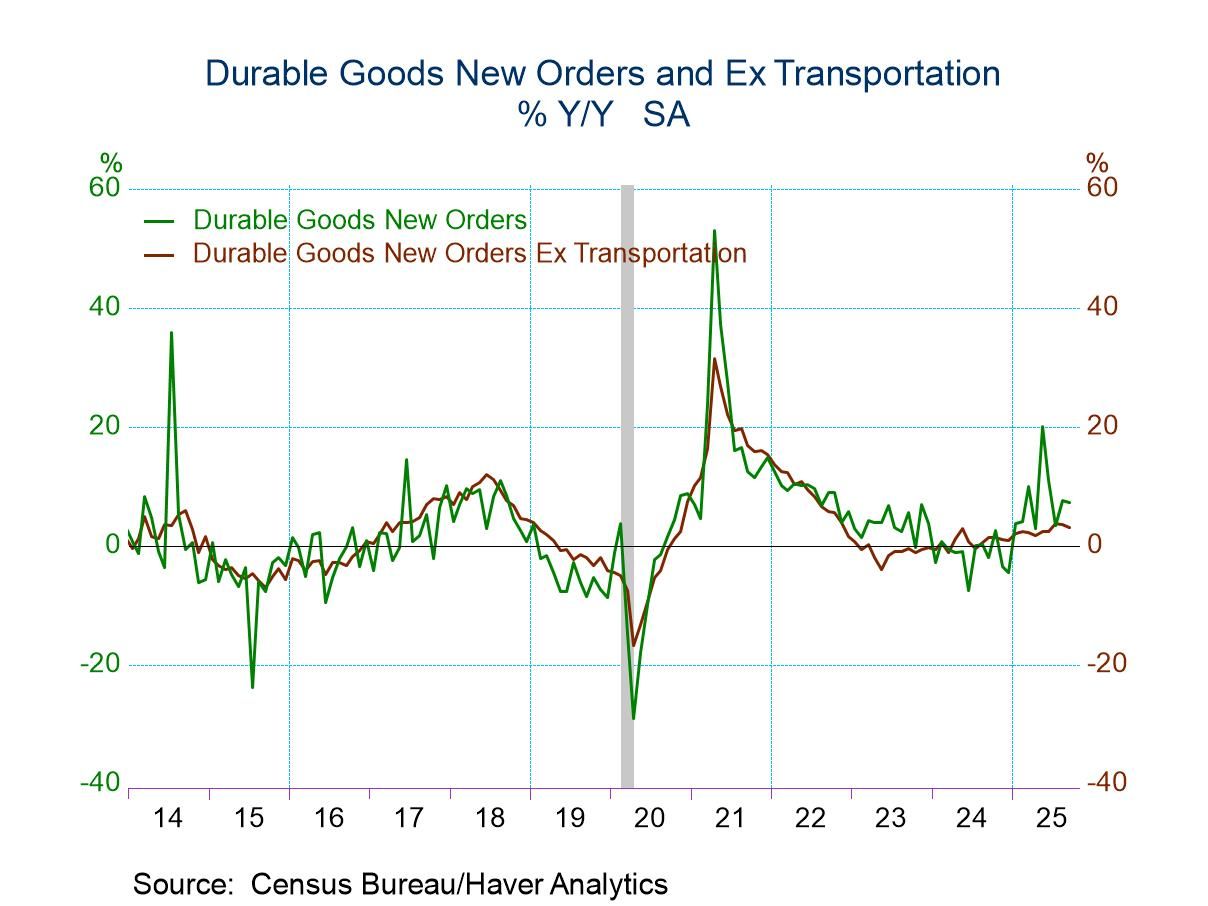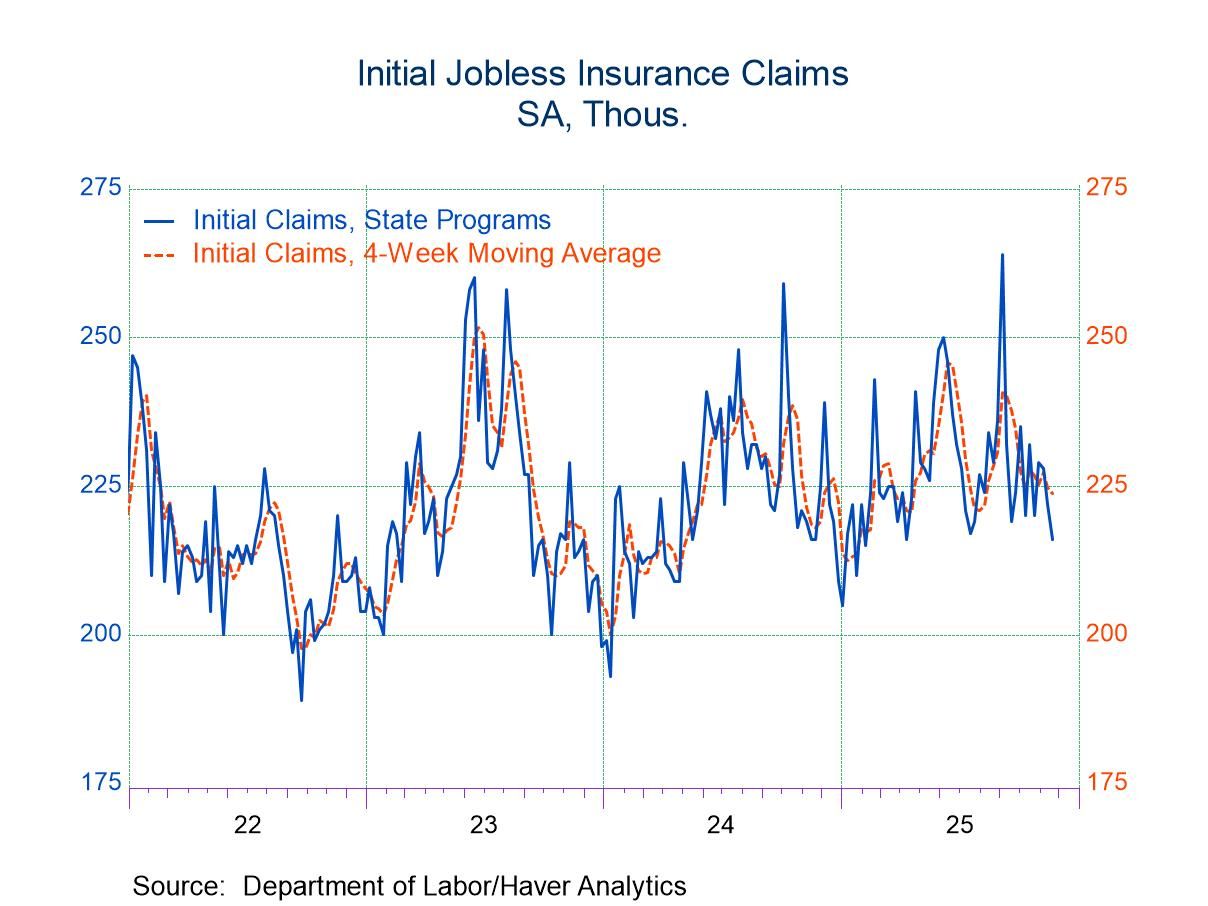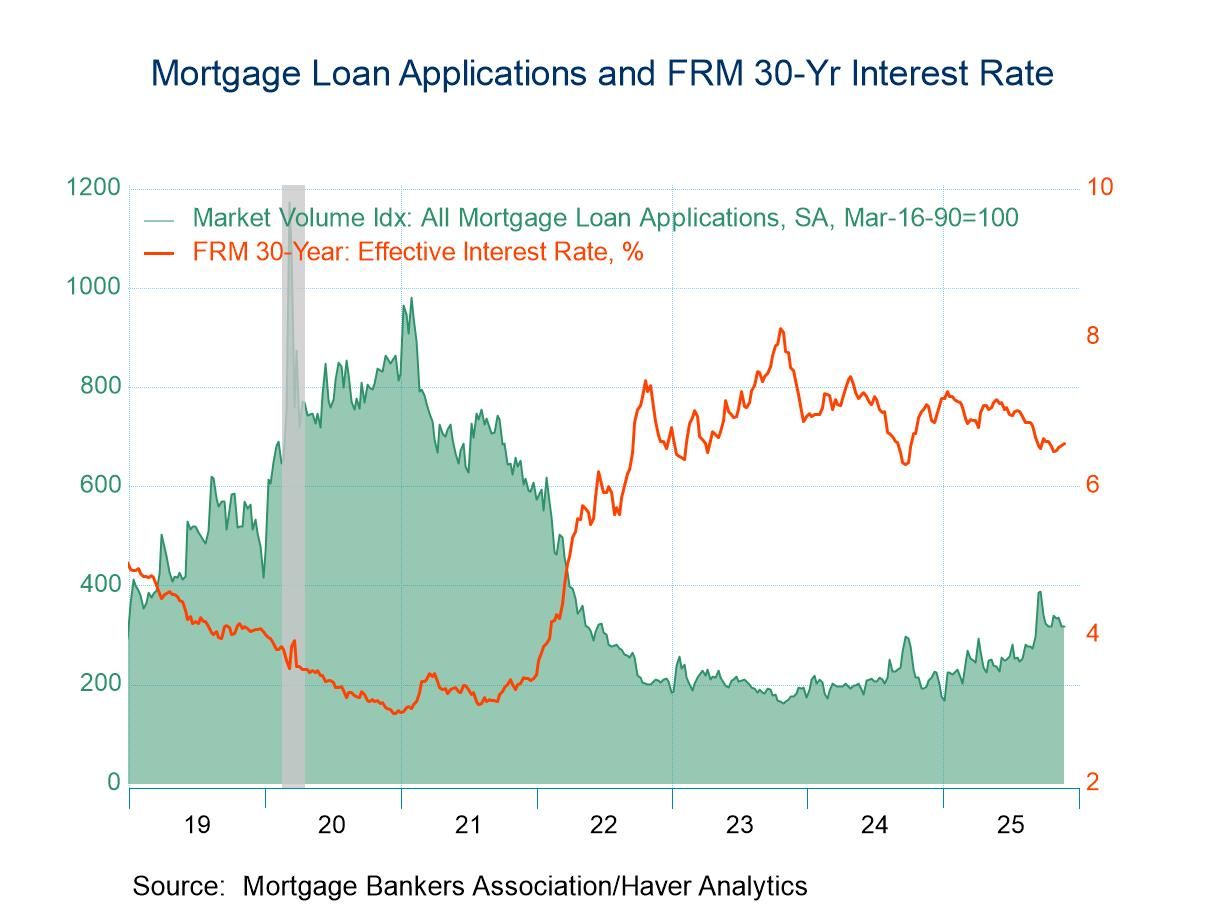 Global| Oct 11 2012
Global| Oct 11 2012U.S. Trade Deficit Increases; Exports Weaken & Oil Prices Rise
by:Tom Moeller
|in:Economy in Brief
Summary
The U.S. August foreign trade deficit rose to an expected $44.2B from $42.5B in July. Exports fell 1.0% (+1.6% y/y) while imports slipped 0.1% (+1.0% y/y). In chained 2005 dollars, the deficit in goods deteriorated to $48.4B in [...]
The U.S. August foreign trade deficit rose to an expected $44.2B from $42.5B in July. Exports fell 1.0% (+1.6% y/y) while imports slipped 0.1% (+1.0% y/y). In chained 2005 dollars, the deficit in goods deteriorated to $48.4B in August, its deepest since April. Real exports fell 2.6% (+2.4% y/y) while real imports slipped 0.9% (+2.9% y/y).
Real exports of foods, feeds & beverages led the decline with an 11.9% drop (+2.6% y/y). Real exports of nonauto consumer goods slumped 2.6% (+1.6% y/y) while real exports of autos & parts slipped 0.5% (+8.3% y/y). Offsetting these drops was a 1.0% rise (6.7% y/y) real exports of capital goods. Services exports rose 0.5% (1.8% y/y) as travel exports nudged up 0.2% (5.3% y/y) and passenger fares fell 1.2% (-2.8% y/y).
Total nominal imports slipped 0.1% (+1.0% y/y) in August, down for the fifth straight month, as goods imports fell 0.3% (+0.6% y/y). The uptick in oil prices to an average $94.36 per barrel helped raise the value of petroleum imports by 3.8% (-11.7% y/y). The quantity of petroleum imports increased 1.1% (-6.4% y/y). Elsewhere, in real terms there was a 3.0% drop (+16.5% y/y) in auto imports and a 2.5% decline (-2.3% y/y) in imports of nonauto consumer goods. Imports of capital goods fell 1.0% (+5.5% y/y) but imports of foods, feeds & beverages rose 2.5% (6.5% y/y).
By country, the August goods trade deficit with mainland China improved slightly m/m to $28.7B, still near the record. Exports to China increased 2.2% y/y while U.S. imports slipped 0.2% y/y. With Japan, the deficit was roughly stable m/m at $6.7B as U.S. exports rose 15.9% y/y but U.S. imports increased 9.8% y/y. The deficit with the European Union remained nearly the deepest in five-years at $11.7B with a 4.5% y/y decline in U.S. exports and a 5.5% y/y rise in imports.
The international trade data can be found in Haver's USECON database. Detailed figures are available in the USINT database. The expectations figures are from the Action Economics consensus survey, which is carried in the AS1REPNA.
| Foreign Trade | Aug | Jul | Jun | Y/Y | 2011 | 2010 | 2009 |
|---|---|---|---|---|---|---|---|
| U.S. Trade Deficit | $44.2B | $42.5B | $41.9B | $44.8B (8/11) |
$559.9B | $494.7B | $381.3B |
| Exports (%) | -1.0 | -1.1 | 1.2 | 1.6 | 14.2 | 16.7 | -14.5 |
| Imports | -0.1 | -0.6 | -1.5 | 1.0 | 13.9 | 19.5 | -23.0 |
| Petroleum | 5.2 | -6.0 | -6.6 | -9.4 | 30.7 | 32.5 | -44.0 |
| Nonpetroleum goods | -1.5 | 0.2 | -0.9 | 3.3 | 12.1 | 20.8 | -20.9 |
Tom Moeller
AuthorMore in Author Profile »Prior to joining Haver Analytics in 2000, Mr. Moeller worked as the Economist at Chancellor Capital Management from 1985 to 1999. There, he developed comprehensive economic forecasts and interpreted economic data for equity and fixed income portfolio managers. Also at Chancellor, Mr. Moeller worked as an equity analyst and was responsible for researching and rating companies in the economically sensitive automobile and housing industries for investment in Chancellor’s equity portfolio. Prior to joining Chancellor, Mr. Moeller was an Economist at Citibank from 1979 to 1984. He also analyzed pricing behavior in the metals industry for the Council on Wage and Price Stability in Washington, D.C. In 1999, Mr. Moeller received the award for most accurate forecast from the Forecasters' Club of New York. From 1990 to 1992 he was President of the New York Association for Business Economists. Mr. Moeller earned an M.B.A. in Finance from Fordham University, where he graduated in 1987. He holds a Bachelor of Arts in Economics from George Washington University.



